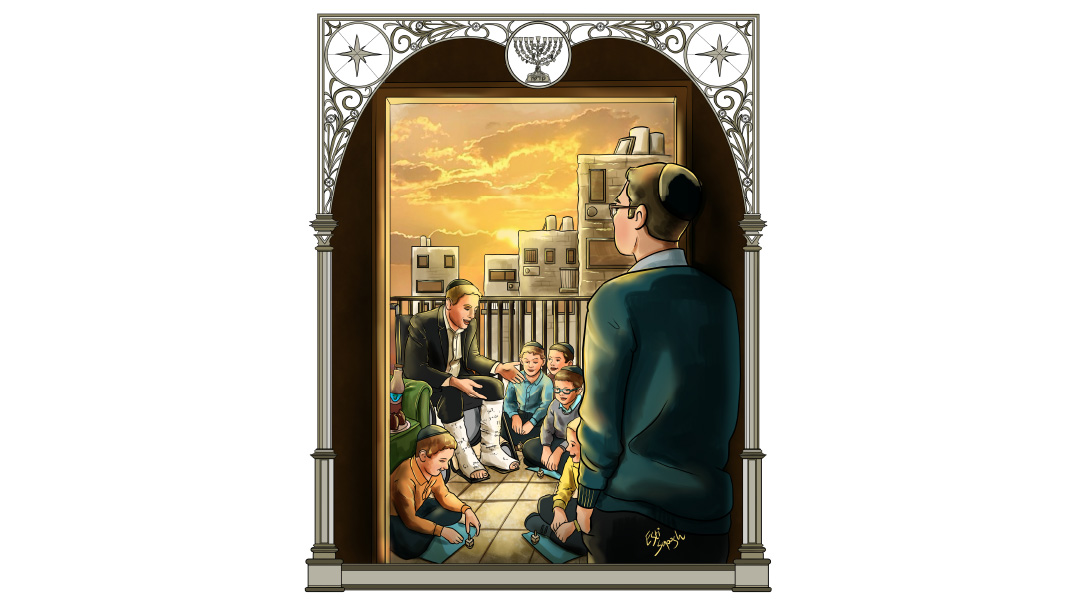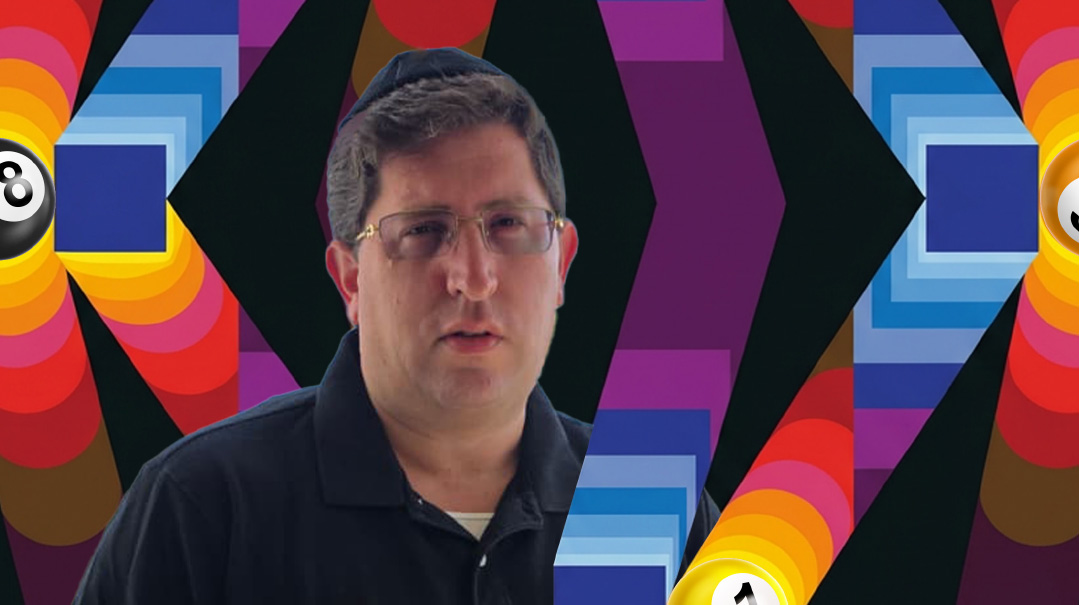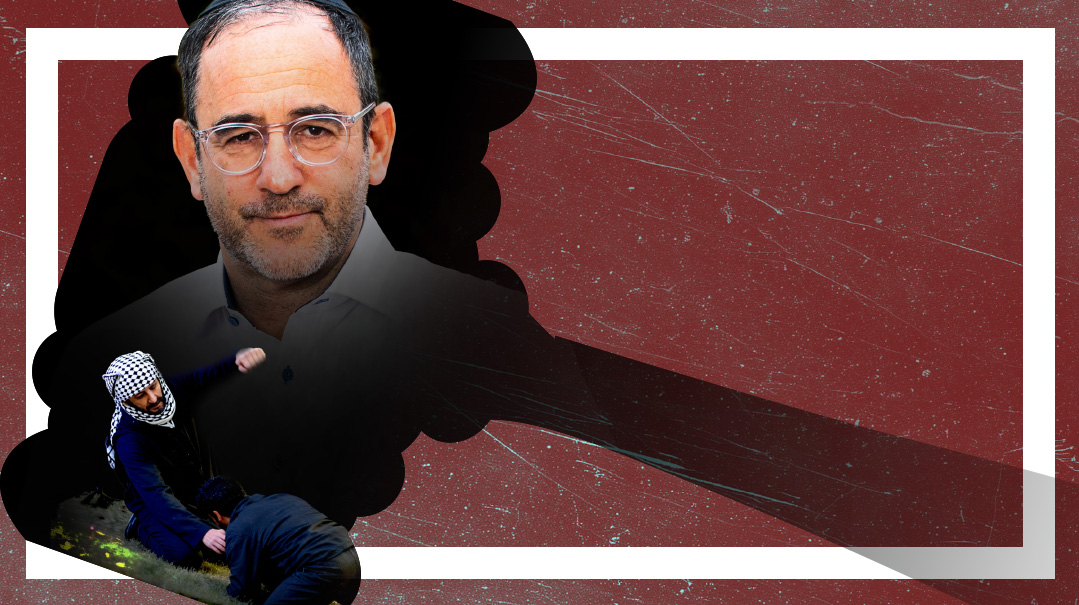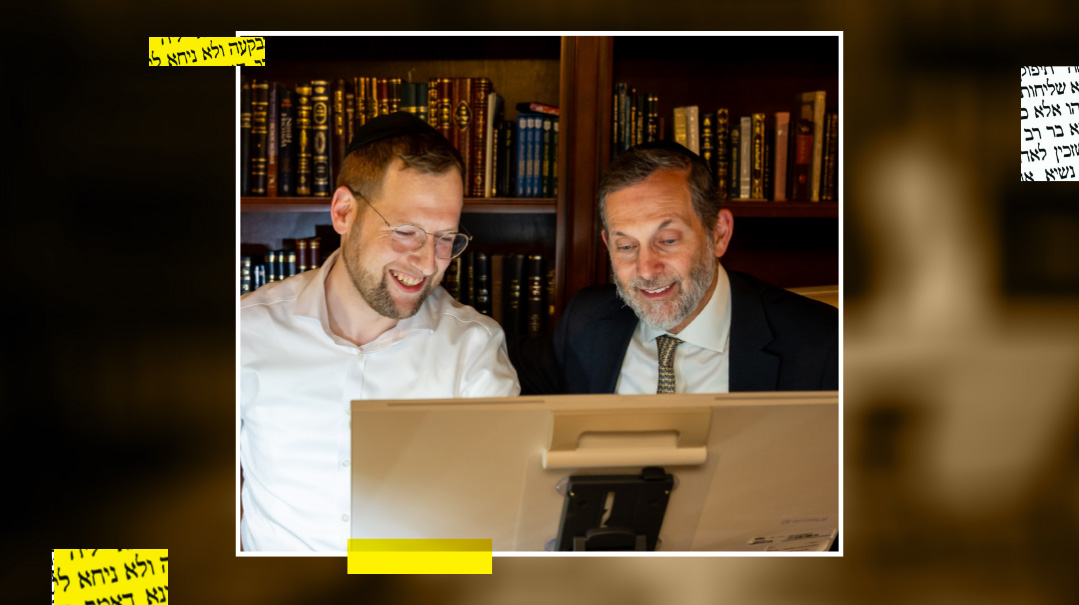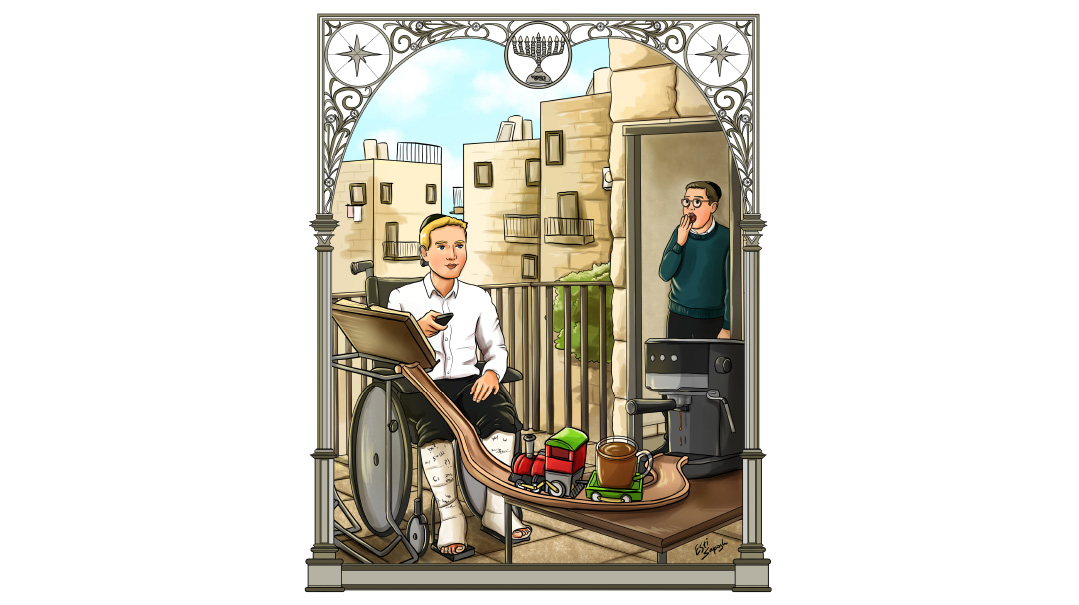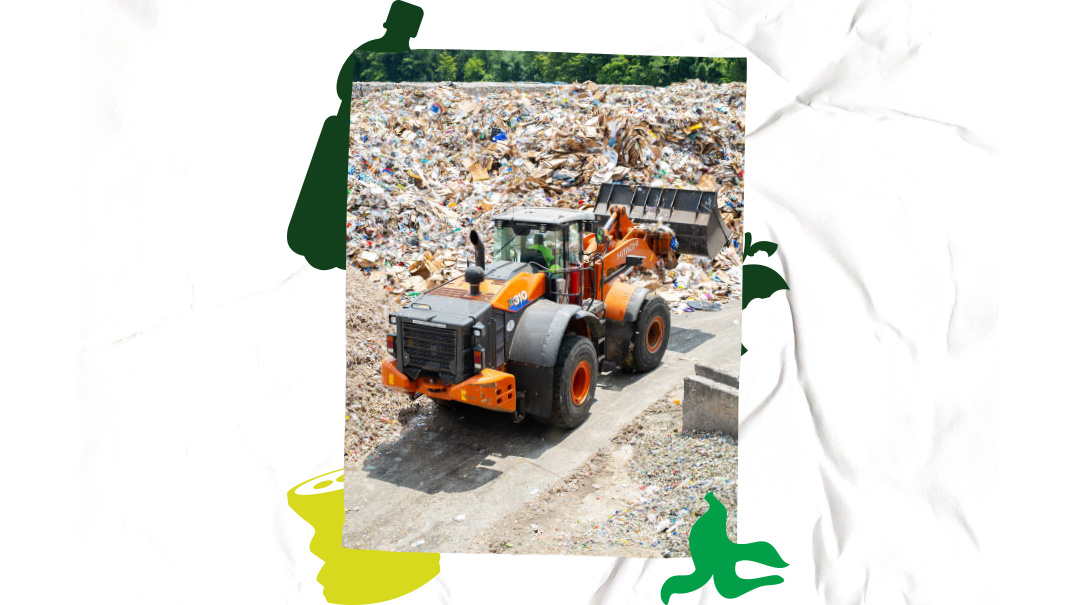Reconstructed on a Dream

The Klausenburger Rebbe never lost hope, because he knew that Hashem is there in the darkest places, too
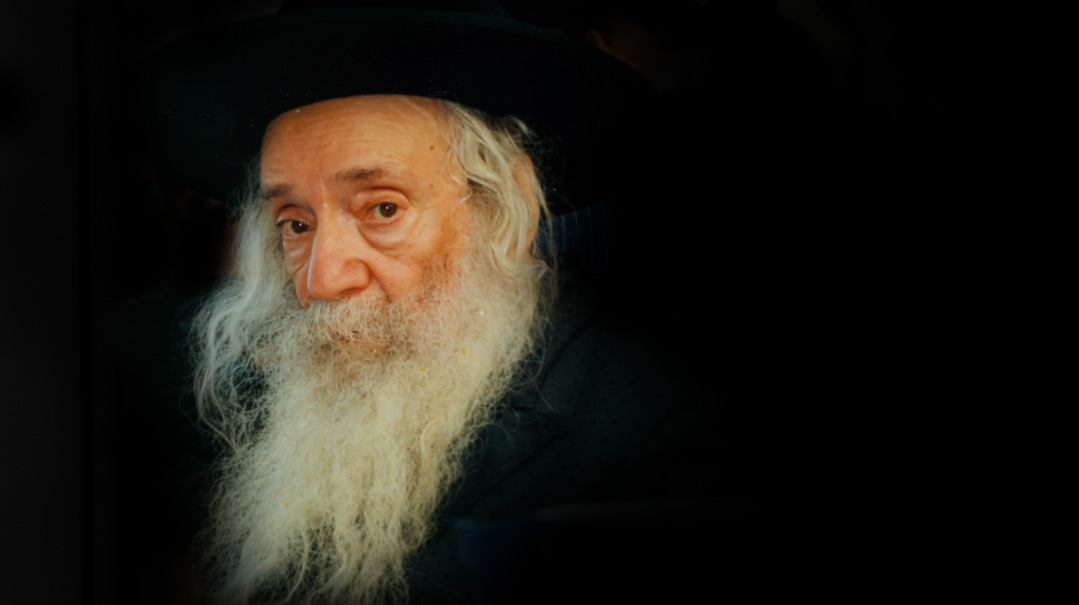
Photos: Mishpacha archives, Sanz archives
The Klausenburger Rebbe, healer of broken souls, visualized a revolution: to build a town and a hospital, and to grow a generation of talmidei chachamim who were experts on all of Shas. And there was something else, that resonates louder than ever 30 years after his passing on 9 Tammuz 5754/1994: No matter where you find yourself, don’t compromise and don’t lose hope, because Hashem is there in the darkest places too
Thirty years ago this week, when the Klausenburger Rebbe, Rabbi Yekusiel Yehudah Halberstam zy”a, passed away, he left standing a world of Torah and chassidus rebuilt out of nothing but his own vision, hope, and unwavering commitment against seemingly impossible odds. Yet the thousands whom he took along for the ride into an unimaginable future — despite his own unfathomable personal suffering — were ever-grateful for this beacon of strength and encouragement that lit up their own dark corners.
Not many of those original followers are still living, but one of his early disciples, 90-year-old Leibush Morgenstern — Rosh Hakahal of the Sanz-Klausenburg kehillah in Monsey — says that his first encounter with the Rebbe, when he was a 12-year-old Holocaust survivor in the Heidenheim DP camp, cemented his relationship forever.
“It was before Rosh Hashanah of 1946, and we heard that the Klausenburger Rebbe would be in the Foehrenwald Displaced Persons camp for Yom Tov,” Reb Leibush remembers. “The Rebbe had spent the past year making his way around the DP camps, organizing minyanim, chadarim and yeshivos under the “She’eris Hapleitah” banner, and a few of us boys decided to spend Rosh Hashanah and Yom Kippur in his presence.”
They knew that the year before, when the Rebbe was in Feldafing for the first Yom Kippur after liberation, the Rebbe — who had been separated from his family and had just learned that his wife and all 11 children had perished [his oldest son survived the death camps but died shortly after liberation, before he could be reunited with his father –ed.] — electrified the broken crowd with his heartrending tefillos. When he got to the Vidui on Yom Kippur night, he stopped at each confession to ask, “Ashamnu: Did we even have the ability to sin? Bagadnu: Have we betrayed You? Gazalnu: Was there anything left to steal during these terrible years? This Vidui,” the Rebbe said with a sigh, “is not for us,” and he closed the machzor. But then he continued, “Yet there are sins that we are guilty of. We told Hashem that we can’t take it anymore, that He should end it for us…. How many times did many of us pray, Master of the Universe, I have no more strength, take my soul so I will not have to recite Modeh Ani anymore? For some of us, our bitachon was weakened. So now, we must strengthen our emunah and from this broken place we must rebuild, because that is Hashem’s will for us.”
[The next day, on Yom Kippur afternoon, he gave his famous speech about moving forward despite the devastation to a crowd that had come to greet General (and future US president) Dwight D. Eisenhower, which brought the general to tears.]
How did the Rebbe have the inner wherewithal to grab onto the elusive rays of light, after having lived through so much darkness?
The Rebbe was born in the small town of Rudnik, Poland, in 1905, to a chassidic family of the Sanz dynasty — the Divrei Chaim of Sanz was his great-grandfather. He was a young illui, and at age 14, when his father passed away, he replaced his father as the town rav, having already received semichah from several gedolim. He married his second cousin, Pessel Teitelbaum, the daughter of the Atzei Chaim of Sighet, brother of the Satmar Rebbe, and soon afterward became the rav and rosh yeshivah in the town of Klausenburg.
During the Holocaust, his entire family was sent to Auschwitz, yet he didn’t lose faith — not in the camps, not in the forced labor details he was assigned to, nor on the death marches. Because he knew that even in the most horrifying place on earth, HaKadosh Baruch Hu was with him. In fact, during one summer death march, when the Nazis left the group of Jews to die in the summer heat, the Rebbe asked everyone to start digging in the earth. When they did, water miraculously emerged out of the soil. The Rebbe then said, “Here we have proof that despite all the concealments upon concealments, Hashem is still here with us.”
The Rebbe survived, battered but whole, and spent the next two years in the Displaced Persons camps setting up yeshivos, soup kitchens, mikvaos, freeing agunos, encouraging survivors to remarry, and doing whatever he could to comfort the shattered remnants of a lost world.
In 1947 he moved to New York, married Chaya Nechama Ungar, the 24-year-old orphaned daughter of the Nitra Rav. The shidduch was proposed by the kallah’s brother-in-law, legendary Holocaust rescuer Rav Michoel Ber Weissmandl, who believed that his sister-in-law, who had herself sacrificed so much for the Torah study of her father’s students before and during the war, was a suitable match for this great rebbe, even as he was 18 years her senior and had previously raised an entire family. To allay her concerns, the Rebbe reassured her that they would both merit to bring all their children to the chuppah, and in fact, they had seven more children (their two sons are today’s rebbes in New York and Eretz Yisrael). The Rebbetzin, who passed away in 2020, was his constant devoted helpmate in his colossal rebuilding efforts.
In 1959, the Rebbe made aliyah and settled in the nascent Kiryat Sanz neighborhood in Netanya that he envisioned and built. He had a long-range vision of rebuilding the Torah world that was lost; he established yeshivos and kehillos in both Union City, New Jersey, and Kiryat Sanz, initiated the worldwide Mifal HaShas program and Shas kollelim, and founded Laniado Medical Center in Netanya — considered an audacious and unrealistic fantasy: What did a Hungarian chassidic rebbe know about hospitals in Israel? But the Rebbe was set on creating a dream out of a nightmare.
“While incarcerated in a Nazi death camp, I was shot in the arm,” the Klausenburger Rebbe once told a group of talmidim. “I was afraid to go to the Nazi infirmary, because although there were doctors there, I knew that if I went in, I’d never come out alive…. So I plucked a leaf from a tree and stuck it to my wound to stanch the bleeding. I made a neder that if Hashem would heal me and release me from this horrible place, I would build a hospital in Eretz Yisrael where every human being would be cared for with dignity. And the hospital would stand on the foundational belief that there is a G-d in this world, and that when the doctors and nurses treat a patient, they are fulfilling the greatest mitzvah of the Torah.”
Reb Leibush, of course, didn’t know any of that when he and his young friends decided to spend Yom Tov with the Rebbe, yet 78 years later, he says he still has no words to describe the passion of the Rebbe’s davening. It was like a call to arms to follow Hashem into the future. He says that around 600 Yidden davened together with the Rebbe, and if Rosh Hashanah was a fire, Yom Kippur was an inferno.
“On Yom Kippur night, when the Rebbe recited the piyut ‘Amnam Kein’ and reached the words, ‘Wipe away our sins and our wickedness,’ he kept repeating the words as he literally lay prostrate on the hard floor with outstretched hands and legs, pouring out tears like a river, crying, ‘Tatte, wipe away our sins… wipe away our sins….’ ”
Reb Leibush was young, but he understood what it meant to be held by HaKadosh Baruch Hu — he and his family had their own miracle story of salvation.
He was born Leibush Weinberger in 1934, one boy among five sisters, whose father was the rav of a shul in Budapest. But Rav Weinberger was unhappy with the available chinuch in the more modern city, and so he sent little four-year-old Leibush to live with his grandfather in the chassidish town of Nyirtass (Tosh). Rav Weinberger was taken to a labor camp in 1942, where he died of hunger before the war was over, as he refused to eat treif. Meanwhile, at the beginning of 1944, Nyirtass had been made into a ghetto which was to be liquidated. Mrs. Weinberger, a fresh yet resourceful widow, paid a Hungarian woman to bring her son back to Budapest, and Leibush, skinny kid that he was, slithered under the barbed wire where the woman met him, cut off his peyos, and took him on a train teeming with Nazis back to Budapest. Soon after, Budapest was also put into a ghetto, yet the family somehow managed to sneak into the Swiss Embassy, where they were allowed to stay until the end of the war — they were given a tiny space to live, a plank about the size of a large table, but at least mother and children were alive by the war’s end.
The family ended up in Heidenheim DP camp, and in 1946, Leibush’s mother, an almanah with six little children, married Reb Amram Morgenstern, a shochet whose wife and ten children were murdered by the Nazis. He took in her children as his own, they changed their name to Morgenstern, and the couple had another five children together. They remained in Heidenheim until 1949, when the Joint sent them to New York.
The Rebbe had been making his rounds throughout the DP camps and created over 40 She’eris Hapleitah mosdos in the year after the Holocaust, restoring in a broken generation both responsibility and enthusiasm to study and observe Torah. He came to Heidenheim toward the end of 1946, where young Leibush, who was studying in his She’eris Hapleitah yeshivah, reconnected with him. The Rebbe, for his part, knew all the boys in the yeshivah by name, even though he had dozens of such institutions in Germany and beyond.
There were thousands of refugees in Heidenheim at the time, and the Rebbe appointed Rav Getzel Schiff to lead them.
“Rav Schiff wanted to refuse,” says Reb Leibush, “but the Rebbe wouldn’t take no for an answer. ‘You need to know that this era is different from all other times,’ the Rebbe told Rav Schiff. ‘Hashem has spared us so that we can rebuild the ruins, breathe life into the dry bones, and that is why you need to accept the burden of leadership upon yourself.’ ”
Reb Leibush was just 12, but he remembers that for the Rebbe, every broken survivor was his own child. “I remember there was one young man in the She’eris Hapleitah yeshivah, but rumors circulated about him frequenting questionable places. It also reached the attention of the Rebbe, who called the bochur in. The Rebbe gently asked him, ‘There are rumors that you’ve been going to places you shouldn’t be — is there some reason your feet are leading you there?’ The young man responded truthfully, ‘Doesn’t the Rebbe know that I’m all alone, the only survivor from my entire family? My father, mother, seven sisters, and three brothers, all were slaughtered in those awful war years along with all my extended family. I often find myself sinking into despair, and at least these places distract me enough to alleviate a small bit of the sorrow that envelops me.’
“The Rebbe cried together with him, then turned to him and said, ‘From now on, whenever you feel overwhelmed by the crushing sadness, come to me — my door is always open to you.’ And so it was — whenever sadness was about to overtake him, this young man would go into the Rebbe, who had unlimited time for him no matter what he was in the middle of, no matter how many open seforim were on his table.”
This unconditional love for every Jew was the backdrop of the Rebbe’s days. There was a young girl who came to the Rebbe in tears on Erev Yom Kippur — her parents were dead, and there was no one to give her the traditional blessing. “Who will bentsh me now?” she cried. The Rebbe put a handkerchief on her head and blessed her, and within five minutes there was a line of another 80 girls and women lined up to get the Rebbe’s brachah.
Then came the day in August 1947 of the Rebbe’s own wedding. The Rebbe was wrapped in his tallis, totally absorbed in an Erev Yom Kippur Vidui before his nuptials. He threw himself to the ground and wept from the depths of his heart. His talmidim were alarmed — for what sins could he possibly be seeking atonement? How much more purification could he possibly need than having gone through the forge of Gehinnom and never for a moment having lost his Divine image?
Meanwhile, the crowd was waiting for the Rebbe to finish and emerge, so that they could receive his blessings before the chuppah. They were to be disappointed, because the gabbai came out and announced that there was now no time for the Rebbe to accept their kvitlach. Yet one woman, who had been waiting all afternoon for this special grace, burst into tears and exclaimed, “Holy Rebbe, we have been waiting for hours to receive your blessing and you have been praying so long at our expense?! Do you really need all that repentance?! Have mercy on us and bless the people!”
The Rebbe’s huge heart could not turn anyone away, even in his most personally intense moments.
Once Reb Leibush’s family settled in New York, he spent the next three years learning in the Klausenburger Rebbe’s yeshivah in Williamsburg, where the Rebbe was both a disciplined teacher and father figure to so many young, broken souls.
“There was one really evil neighbor who used to harass us, damage the property, and even tried to attack the Rebbe,” Reb Leibush remembers. “One night during the Rebbe’s Kiddush Levanah, we got wind that he was planning to harm the Rebbe, so we preempted it with a little attack of our own. Needless to say, the man called the police and reported on one particular boy, the main culprit. The bochur was frightened, and ran to the Rebbe for advice, who told him to hide among the succah boards that had been stashed along the side of the building. The police came, searched all over for the boy and even looked straight into his hiding place, but like the Navi of old, the Rebbe caused them not to see, and they left.”
Reb Leibush remembers another encounter that would leave a lasting impression on him, and would help him in his own fundraising efforts on behalf of the Rebbe’s institutions years later. The Rebbe asked a particular bochur to help raise funds for an important project, but the boy was embarrassed. The next day, he took $25, a huge sum at the time, out of his pocket and handed it to the Rebbe. The Rebbe looked at him closely and asked, “Is this money that you raised?” The boy admitted that it was his own savings, that he couldn’t get over the bushah of fundraising. “Neither could I,” the Rebbe told him. “But my holy rebbes taught me how to come out of my ego for the greater good, and I will teach you.”
When Leibush was 18, he felt he had no choice but to leave yeshivah and go out to work to support his struggling parents. Initially the Rebbe was none too pleased with this development, until Leibush explained that it was only to help his family, who were on the brink of destitution in the new country.
“The poverty in our home was harsh,” Reb Leibush says. “We were a large family with eleven children, and I felt I didn’t have a choice. I remember to this day the exact conversation I had with the Rebbe, explaining that all the money I would earn would go to my parents. ‘I believe a young man should sit and learn,’ the Rebbe told me, ‘but if that’s not possible, I ask you at least to set aside times for Torah study, two hours in the morning before work and two hours in the evening afterward.’ Then the Rebbe gave me another wise piece of advice: ‘If a young man goes out to work, it’s better for him to keep some money on the side for himself. Otherwise, you will have neither Torah nor money and you’ll be pressed from all sides.’ The Rebbe suggested that I set aside a sum of money each month for myself, for what I’ll need to get married, and I did.”
Leibush wasn’t afraid of hard work. He started out selling kitchen supplies, became a rebbi in yeshivah, drove the yeshivah bus, and at night delivered chickens for Klausenburger butcher. Then he learned to cut diamonds, eventually started own business, was taken in by a bigger company, and in the end he did very well for himself.
Always at the Rebbe’s side and ready to help, Reb Leibush was the first board member on the Laniado Hospital project, which was founded by the Rebbe against all odds and naysayers. The Rebbe actually laid the cornerstone of the medical center soon after he arrived in Netanya in 1959, although he had no capital, no fundraising apparatus, and no building permit. For years, he petitioned the authorities for the necessary permits, finally getting them when control of the Health Ministry was given to the National Religious Party after the leftist party that controlled it until then quit the government. The Rebbe spent 15 years traveling around the world fundraising for his hospital, continuing to build each time more funds came in. (The hospital was named after the Laniado brothers, Swiss bankers who gave the Rebbe a substantial bequest from their estate.) The Rebbe spent the next decade continuing to fight the unending bureaucracy, and the first building, an outpatient clinic, finally opened in 1975. The following year, the maternity ward opened.
The Rebbe was in America when the hospital finally opened — he lived in Union City, in the Sanz kehillah he founded, from 1972 to 1986, when he returned to Eretz Yisrael to live out his final years in the Holy Land.
In the early 1970s, Reb Leibush, whose diamond business became quite successful, traveled to Antwerp often, and the first large sum and ongoing contribution to the hospital was given by his Belgian partner, Isaac Teche.
“The first birth in the hospital was a real celebration by the Rebbe,” Reb Leibush remembers. “It was 2 a.m. and hospital CEO Rabbi Gershon Leider immediately called the Rebbe to share the news as the sound of the baby’s cries were heard over the phone line. That Shabbos night, the Rebbe held a shalom zachar at the tish.”
By the 1980s, the Rebbe was already very weak, and Reb Leibush was called in. “You are my transportation minister,” the Rebbe told him. “I want you to arrange how I can get back to Eretz Yisrael as soon as possible.” Reb Leibush recalls that it was a complicated operation — the doctors had to give their consent to let the Rebbe travel, even with an entourage.
“It wasn’t the first big project I did for the Rebbe,” Reb Leibush relates. “I’d once completed a huge undertaking, and the Rebbe said to me, ‘I want to bless you with a special brachah for wealth, and from this you will be able to help with anything that is needed.’ I told the Rebbe that the greatest wealth would be to have good, honest children, and indeed, this blessing was fulfilled — but in truth, anyone who worked for the holy Rebbe never lacked for anything.”
“When people think about the Klausenburger Rebbe, they think about all the great things he did, how he was matir agunos after the war, how he uplifted Jewish spirits even in the throes of his own huge loss, rebuilt yeshivos and Torah learning and chassidus, how he built an authentic Jewish hospital against all odds. But while everyone knows that the Rebbe was a tzaddik and a poel yeshuos, most people don’t associate the Rebbe with the fact that he was a genius in limud Torah,” says Reb Leibush’s son-in-law Rabbi Feivel Mashinsky of Monsey, a longtime talmid of the Rebbe and the content editor of ArtScroll’s newly-released wide-ranging biography, The Klausenburger Rebbe. “The Rebbe wrote Shefa Chaim and Divrei Yatziv, seven volumes of teshuvos that today’s gedolim use as their handbook, but the hamon am didn’t always know about that.”
Maybe that’s because of the Rebbe’s own set of priorities after the war.
There were years when the Rebbe’s Torah was not so visible, the postwar years when the Rebbe put all his energy into rehabilitating Klal Yisrael.
“The Rebbe’s first priority was to make human beings out of the survivors,” says Rabbi Mashinsky. “Of course, there were many heroes, and we know those stories of nobility, but many others had become subhuman after years in concentration camps —they’d been living like animals, their humanity stripped from them. The Rebbe taught them how to be human again. After that, the Rebbe would say, he wanted to make them Yidden, and then chassidishe Yidden, and then bnei Torah. There was an old Yid in Monsey, Reb Shaya Fuchs, who went through seven levels of Gehinnom in his six years in the camps, and he said, ‘By the time we were liberated, we were literally not human. The Rebbe made us into menschen, gave us back our tzelem Elokim.’ ”
In his own life, though, the Rebbe, going through that same Gehinnom, stayed totally connected to his higher self, with no compromises.
“The Rebbe wrote a teshuvah about when to daven Maariv on a two-day Yom Tov according to the shitah of Rabbeinu Tam,” Rabbi Mashinsky relates, “and he wrote that this was especially important to him because he was in Auschwitz on Shavuos and wanted to know when could daven Maariv.”
In the years after liberation, the Rebbe rarely talked about his Holocaust experiences and never mentioned his first family, but in later years, especially in his public Chumash-Rashi shiurim every Thursday night, he would reveal stories that tested his faith yet how it was always about his unyielding connection to HaKadosh Baruch Hu. The Rebbe, for example, described his first Shabbos in Auschwitz:
“I arrived in Auschwitz on Friday morning after not eating for several days,” the Rebbe related. “We were immediately chased off the transport and into the camp. They brought us food that they called ‘meat,’ but it was mostly straw with who knows what kind of horse meat was inside. Everyone ran to eat, but I said to myself, ‘Everything has been taken from me, from my spirit and my soul, and now I should also eat treif? So I fasted the whole day Friday. Friday night I was very weak, so weak I just lay there and couldn’t get up. Shabbos morning, there was another announcement to go get food. And I knew then: I won’t go, they won’t take that from me. I just stayed there while the barrack emptied out. I was all alone, and I began to cry. I never used to cry, ever. But I cried, Ribbono shel Olam, You took everything from me, no shoes, not clothing, nothing, and here I am, lying in the hands of the goyim, should I eat treif? Hashem, I don’t want to eat treif!
“I’m crying, all alone in the barrack, when I hear a young fellow running in, ‘Are you the Klausenburger Ruv?’ I was very frightened, because if they knew you were a rav, they’d immediately shoot you. But I realized I couldn’t hide. I didn’t know if it was the SS or a kapo, so I went to the door — I see a man standing there and he asks me, ‘Was the holy Kishanaver Rav your uncle?’ What could I have answered, I should have said no? So he tells me, ‘I’ve brought you a loaf of bread and a plate of marmalade, so that you should have something to eat.’ He brought me bread — a million dollars wasn’t worth what that bread was worth. And I knew — yes, Hashem is here with me. Even in this horrible place, Hashem is here, too. And at that point, I knew that under no circumstances would I ever eat treif — if Hashem sends me kosher bread and marmalade, how could I chas v’shalom eat treif?
“I found a little water to wash netilas yadayim and made Kiddush on the bread… and I never saw that man again. I was in the clutches of those resha’im for an entire year, and I survived, never eating treifos or desecrating Shabbos. Because it was clear that come what may, I was in Hashem’s embrace.”
“You know, when you have such unbreakable faith, you can live on that level,” says Rabbi Mashinsky. “The Rebbe was able to get down into the muck of the generation, but for himself, he was totally tethered to Hashem at all times, with no compromises.”
Today, 30 years after the Rebbe’s passing, Rabbi Mashinsky — who for many years as a bochur and later as a yungerman actually transcribed much of the Rebbe’s Torah — says his biggest regret is that he didn’t take advantage enough of the Rebbe’s open door when it came to Torah learning.
“The Rebbe wanted people to come to him, he wanted to discuss Torah learning with them. He used to say, ‘I’m not a real estate agent, I’m not a businessman, come talk to me in learning….’ For the Rebbe, it was also the best therapy. The Rebbe suffered from excruciating migraines since the Holocaust, and he was known to take extra-strength painkillers nonstop. People coming to talk to him in learning was a balm for his pain.” (One time in Eretz Yisrael, a father brought his five-year-old daughter to the Rebbe, explaining that she suffered from terrible headaches. The Rebbe said, I’m suffering so much from headaches, I’ll take hers on, too. And she walked away cured….)
“After the book came out,” Rabbi Mashinsky continues, “a yungerman in Lakewood stops me and says he must tell me a story: This fellow had a brother, a real metzuyan when he was a teenager, who was in the country and had a hard question on the Gemara. The Rebbe, who was ill and weak at the time, was in Woodbourne, so the bochur decided to knock on the door and discuss his question with the Rebbe. He knocked on the door, and the protective gabbai asked, ‘What do you want?’ ‘I have a kashe for the Rebbe.’ ‘Sorry, not now…’ The Rebbe heard the commotion and asked what was going on. ‘There’s some bochur here who wants to ask you something,’ the gabbai said. The Rebbe told him to come in, the bochur asked the question, and the Rebbe is thinking, thinking…. Then he gets up, goes to the drawer and pulls out a $50 bill. ‘Bochurel, host gut gefregt,’ he told the boy. He was so machshiv Torah and wanted to show this bochur how appreciated his question was.”
IN addition to the close rebbi-talmid relationship Rabbi Mashinsky had with the Rebbe, he also merited to have the Rebbe as his shadchan. The Rebbe, who made and encouraged hundreds of shidduchim in the DP camps, only made two shidduchim in later years, and Feivel Mashinsky’s was one of them, to the daughter of his close confidant, Leibush Morgenstern.
“My brothers and I were Monsey boys who became Klausenburger bochurim,” Rabbi Mashinsky relates. It started with his father, Rabbi Hershel Mashinsky a”h, a longtime and beloved Monsey mechanech and askan, who was a talmid muvhak of Rav Shraga Feivel Mendlowitz.
“On parshas Shelach of 1946,” Rabbi Mashinsky relates, “the Rebbe came to Williamsburg for Shabbos, and Rav Shraga Feivel, who was my father’s rebbe, sent nine bochurim to see the Rebbe. My father davened Kabbalas Shabbos in Torah Vodaath and then walked over to the Tselemer shtibel where the Rebbe was. The Rebbe was in the middle of Shemoneh Esreh, and when got to the words ‘Hatov, ki lo chalu rachamecha,’ it took him over an hour — he was crying and screaming and literally reaching out with his arms to grab onto HaKadosh Baruch Hu. My father looked at him: Here’s a Yid who just lost his wife, his 11 children, his mother, his siblings, his entire kehillah, he witnessed Europe burning and the greatest gedolei Yisrael being slaughtered, and he’s saying these words of thanks. How was it possible? That made him a chassid for his entire life.
“He instilled in us the love of his two rebbes — the Klausenburger and Rav Shraga Feivel (who I’m named after). My father was a rebbi in Yeshiva of Spring Valley for 56 years, and every single day, those two tzaddikim were mentioned.”
Feivel Mashinsky’s two older brothers went to Eretz Yisrael to learn with the Rebbe right after their bar mitzvahs, at the behest of the Rebbe himself, who called Mrs. Mashinsky a”h (the principal of Beis Rochel in Monsey as well as the author of Chance Encounters and several other books) and asked her to send the boys to him. When the Rebbe returned to the US in 1972, Feivel, who was learning in the litvish Beis Shraga in Monsey, decided to follow in his brothers’ footsteps and learn by the Rebbe in his yeshivah in Union City, founded a few years before for bochurim who’d returned from Eretz Yisrael.
For 16-year-old Feivel, it was a huge culture shock. “First,” he admits, “I didn’t speak Yiddish — Monsey kids didn’t speak Yiddish, and we spoke with a litvish havarah. It was a dramatic change, it felt like boot camp. But I was in the glow of the Rebbe, so the transition was worth it. Now, in order to get into the Rebbe’s shiur, you had to farher 300 blatt Gemara Rashi Tosafos. Coming from a litvishe yeshivah where it was iyun over pace, such a thing was unheard of. There were 14 and 15-year-old chassidishe kids who were doing this, but it took me until age 18 to get enough dapim to join the shiur.”
When the Rebbe made the shidduch, one of his stipulations was that the young couple remain in kollel in Union City. Reb Feivel’s wife had grown up in Flatbush/Canarsie so it wasn’t something in her orbit, and a chassidishe kollel was practically unheard of in America at the time, but the Rebbe insisted, “and we were there three years, from 1976 to 1979 — it was a beautiful time in our lives.”
Although 30 years have passed, Rabbi Mashinsky — who today runs Monsey’s Kupas Ezra and gives several Daf Yomi shiurim every day — says he often feels that the Rebbe is still talking to us now. “History repeats itself,” he says, “and so many shiurim, with their relevant lessons, could have been given last week.”
The Rebbe’s love for all Jews was intense, and so was his love for Eretz Yisrael. “He wasn’t exactly a pro-Zionist, but he believed that the Yidden in Eretz Yisrael were all at the core maaminim bnei maaminim.” Rabbi Mashinsky relates. “He used to travel a lot to raise money for the hospital, and once when he was in Panama, he got a generous donation from a Yid who he invited to visit on his next trip to Eretz Yisrael. A few years later, the Yid from Panama takes the Rebbe up on his invitation, but then tells him, ‘I can’t believe how you live here, such a shreklech chillul Shabbos on Rechov Dizengoff.’ The Rebbe answered, ‘Really? I’ve been living here for over a decade, and I’ve never seen that chillul Shabbos.’ What he meant to say was, why are you looking for it? Why are you davka going to Dizengoff? You can see what you want to see.
“The first thing the Rebbe told my father when my father went to visit him in Eretz Yisrael was, ‘ure’eh betuv Yerushalayim.’ ”
According to Rabbi Mashinsky, in the year 5735/1975, the Rebbe became laser-focused on Mashiach, because in a certain Kabbalah sefer it’s written that Mashiach would come in 5736.
“Every day that year, the Rebbe would do a countdown until Mashiach. Until Rosh Hashanah. He was actually very nervous then, for the chevlei Mashiach, the scary prophecies of wars and upheaval, but as soon as the year ended, we didn’t hear a word about Mashiach again.”
The Rebbe, in fact, had many tekufos, times in his life where he would give priority to certain projects or visions.
“In the 1960s, for example, his goal,” says Rabbi Mashinsky, “was to produce gedolei Yisrael. So many gedolim of today went through Sanz and he was their rebbe. He felt a certain desperation, he needed to replace the Torah of all the millions of children who were killed. And he believed that if you were going to be a moreh hora’ah, a posek, you had to be a baki b’Shas. So he wanted to create a generation of Shas experts. And that’s how Mifal HaShas and Kollel Shas began. He had an extremely broad vision of what he had to do for Klal Yisrael.
“He knew he wanted to make a revolution. To build a town, to build a hospital, to make a new generation of talmidei chachamim. He revolutionized the concept of making gedolei Yisrael. That was his dream and his aspiration,” Rabbi Mashinsky says, “yet he left us with another message as well. You know, right after the liberation, American soldiers came in, handing out chocolates and other nonkosher food supplies, and he told the people, ‘Wait, you’re not allowed to eat this. Until now you were slaves, you were potur, but now that you’re free, you’re not allowed.’
“For the Rebbe, Yiddishkeit was uncompromising. Like Yosef HaTzaddik chained in a dungeon for 12 years, who always knew that vayehi Hashem imo — Hashem was with him no matter in which awful place he found himself. This was the Rebbe’s message, and it resonates today perhaps more than ever: No matter where you are, in Auschwitz, in Union City, in Kiryat Sanz or, chas v’shalom, in a Hamas tunnel, you serve Hashem the same way. No compromises, because Hashem is with you even there.”
(Originally featured in Mishpacha, Issue 1020)
Oops! We could not locate your form.

